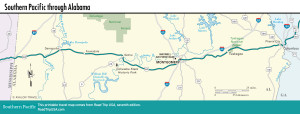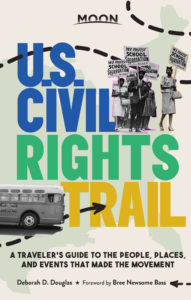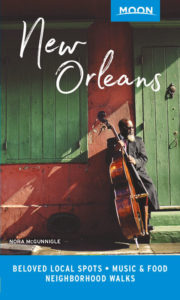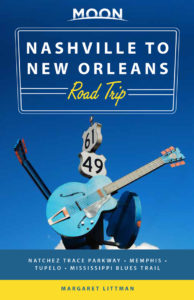Selma and the Civil Rights Movement Historic Trail
Selma
A full century before it played a seminal role in the civil rights movement of the 1960s, Selma (pop. 17,886) was second only to Richmond as an industrial arsenal for Confederate forces. Selma’s foundries and forges produced weapons, ammunition, and ironclad warships, including the legendary CSS Tennessee—and altogether accounted for nearly half of Confederate-made munitions. As in Richmond, the factories were destroyed by Union forces toward the end of the war in April 1865, but a few blocks of downtown’s Water Avenue were spared and now form one of the few intact antebellum business districts left in the South. Hundreds of Civil War-era houses line Selma’s streets, marked by blue shields and forming one of the largest collections of historic houses in the country.
Along the north bank of the broad Alabama River, Water Avenue’s five blocks of well-maintained commercial structures, many now housing antiques shops, include the St. James Hotel (1200 Water Ave., 334/872-0332, $115 and up), with wrought-iron balconies and rooms arrayed around a garden atrium. At the west end of Water Avenue, the humpbacked landmark Edmund Pettus Bridge still carries old US-80 over the river. At the north foot of the bridge, the small but significant National Voting Rights Museum (6 US-80 E., 334/526-4340, 10am-4pm Mon.-Thurs. , Fri.-Sun. by appointment, $6.50), near the US-80 intersection with Cosby Avenue, uses personal artifacts, photographs, and handbills to tell the story of the civil rights struggles of the 1950s and 1960s. While most accounts focus on the high-profile political leaders, the story here is of the local grassroots activists and organizers who struggled for years to win the right to vote. While the more well-known, particularly Martin Luther King Jr., played key roles, the sense you get from visiting the Voting Rights Museum is that it was the many brave but uncelebrated heroes who really made the civil rights movement happen.
Five blocks east, at the other end of the Water Avenue historic district, on the site of Selma’s largest Civil War foundry, the Old Depot Museum (4 Martin Luther King Jr. St., 334/874-2197, Mon.-Fri., Sat. by appointment, $4) traces regional history from before the Civil War up through the civil rights movement and features a large selection of Confederate currency, much of which was printed in Selma. The depot also marks the juncture of Selma’s Civil War history with the more recent battles for civil rights: North along Martin Luther King Jr. Street, markers point out the unchanged sites of key moments in the civil rights movement up to the 1965 March to Montgomery fronted by Martin Luther King Jr. Twenty different displays explain the significance of Selma and point out the historic importance of such sites as the Brown Chapel AME church, where marchers set off toward Montgomery before being violently turned back at the Edmund Pettus Bridge, and the simple brick public housing of the George Washington Carver Homes, where most of the original activists lived.
The Civil Rights Movement National Historic Trail
Dozens of sites in Selma and Montgomery, and the entire 50-mi (81 km) length of US-80 between them, are being documented, preserved, and protected as part of the Selma to Montgomery National Historic Trail. It’s a challenging story to tell, and so far two of three planned National Park Service interpretive centers are opened, on the north side of US-80 near White Hall (334/877-1983, daily, free) and in Selma (2 Broad St., 334/872-0509, Mon.-Sat., free). The centers have information on the Selma-to-Montgomery marches and explore the larger context of the civil rights movement through interactive displays and a film.
Just east of Hayneville is the place where Viola Liuzzo, a white homemaker from Detroit who volunteered to help shuttle marchers between Montgomery and Selma, was murdered by the KKK. A small memorial stands on the site, on the south side of US-80 between Petronia and Lowndesboro.
Map of the Southern Pacific Route through Alabama

















